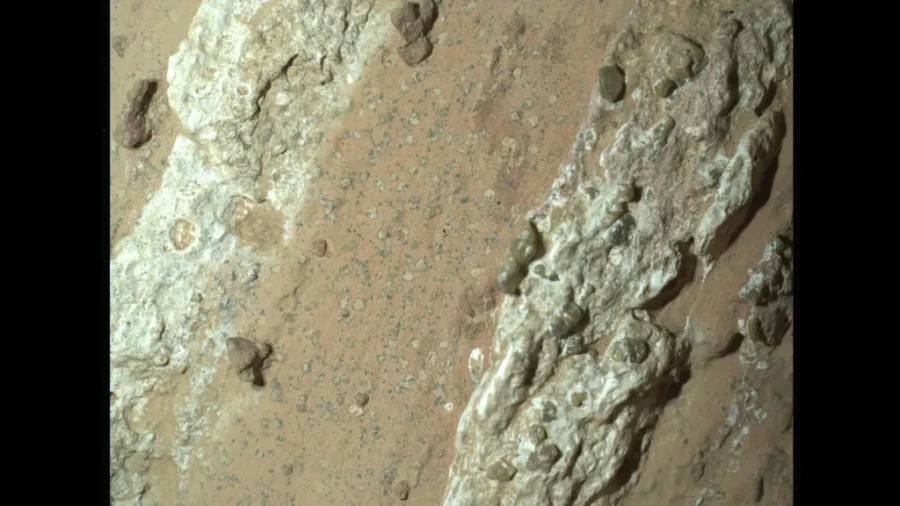NASA’s Perseverance rover has discovered a fascinating rock on Mars that may hold clues to the planet’s ancient past and the possibility of microbial life. The rock, nicknamed “Cheyava Falls,” contains unique features that have excited scientists and prompted further investigation into Mars’ potential for harboring life billions of years ago.
A Complex Puzzle of Chemical Signatures
The Cheyava Falls rock, measuring about 3.2 feet by 2 feet, was found in the Neretva Vallis, an ancient river valley on Mars. What makes this rock particularly interesting are its chemical composition and unusual features that could be indicators of past microbial activity.
Ken Farley, Perseverance project scientist at Caltech, described the significance of the find: “Cheyava Falls is the most puzzling, complex, and potentially important rock yet investigated by Perseverance. On the one hand, we have our first compelling detection of organic material, distinctive colorful spots indicative of chemical reactions that microbial life could use as an energy source, and clear evidence that water — necessary for life — once passed through the rock.”
The rock contains organic compounds, detected by the rover’s SHERLOC instrument. While these carbon-based molecules are considered building blocks of life, they can also form through non-biological processes. This ambiguity highlights the challenges in definitively identifying signs of ancient life on Mars.
Decoding the “Leopard Spots” Mystery
One of the most intriguing features of Cheyava Falls are its “leopard spots” – irregularly shaped, millimeter-size off-white splotches ringed with black material. These spots, containing iron and phosphate, bear a striking resemblance to features found in Earth rocks associated with microbial activity.
David Flannery, an astrobiologist on the Perseverance science team, explained: “On Earth, these types of features in rocks are often associated with the fossilized record of microbes living in the subsurface.”
The presence of these spots, along with large white calcium sulfate veins and bands of reddish material suggesting hematite, paints a complex picture of the rock’s formation and potential interactions with water and possibly microbial life.
Why it matters: This discovery represents a significant step in the search for evidence of ancient life on Mars. If confirmed, it could revolutionize our understanding of the Red Planet’s history and the potential for life beyond Earth. The findings also demonstrate the value of robotic exploration in uncovering clues about Mars’ past that were previously inaccessible to scientists.
However, the team remains cautious about drawing definitive conclusions. Alternative explanations for the observed features are being considered, including the possibility that high-temperature geological processes could have created similar structures without the involvement of life.
The complexity of the Cheyava Falls rock underscores the need for more advanced analysis. While Perseverance has exhausted its capabilities in studying the rock on Mars, scientists believe that bringing a sample back to Earth for detailed laboratory analysis would be crucial for a definitive answer.
As NASA continues its Mars Sample Return program in collaboration with the European Space Agency, rocks like Cheyava Falls could be prime candidates for future return missions. These samples could unlock secrets about Mars’ past and potentially provide concrete evidence of ancient microbial life.
The discovery of Cheyava Falls highlights the importance of continued exploration and the potential for surprising findings on Mars. As researchers delve deeper into the mysteries of the Red Planet, each new piece of evidence brings us closer to answering one of humanity’s most profound questions: Are we alone in the universe?


